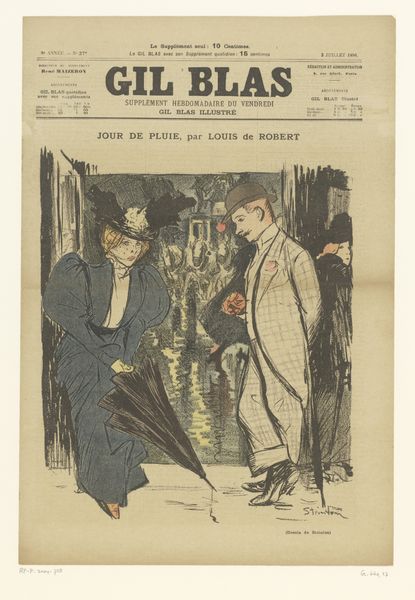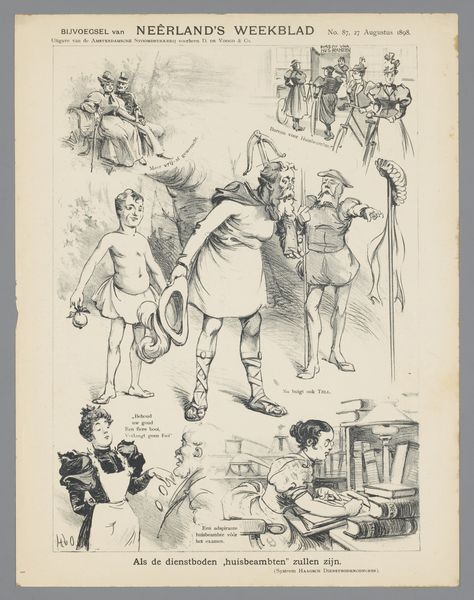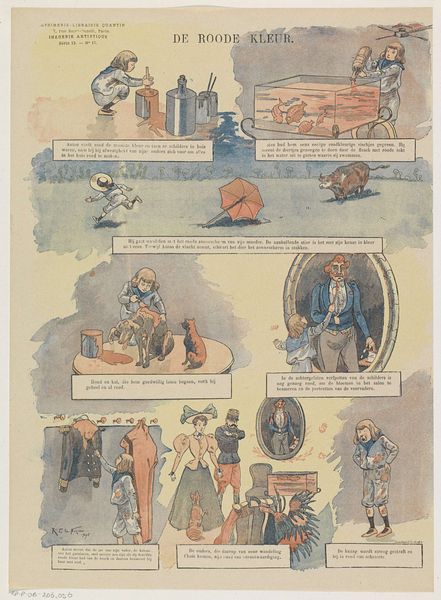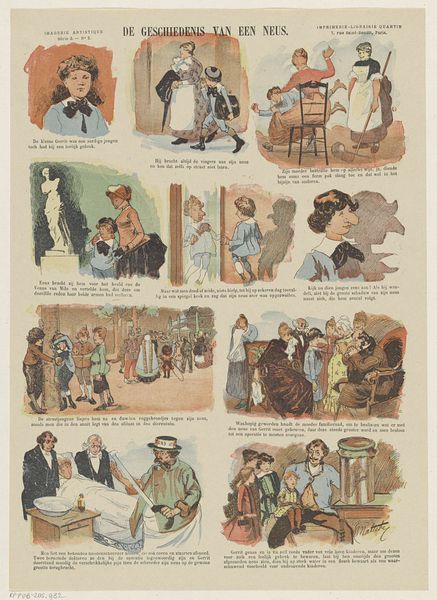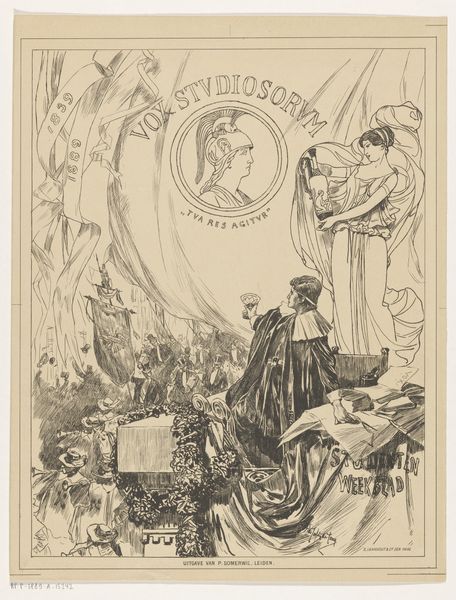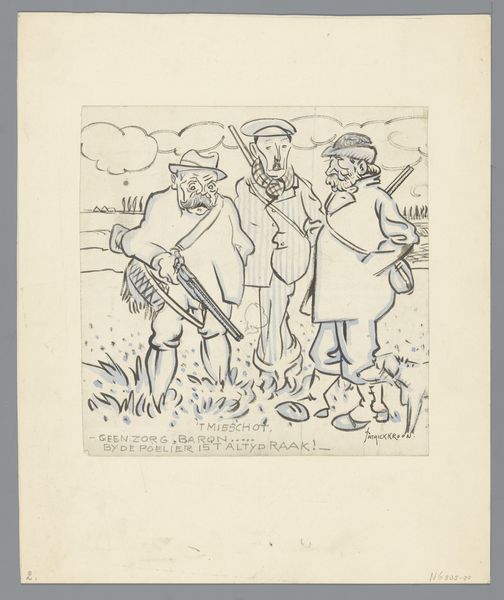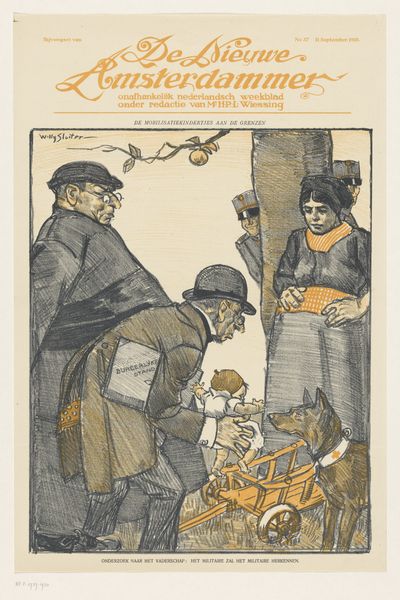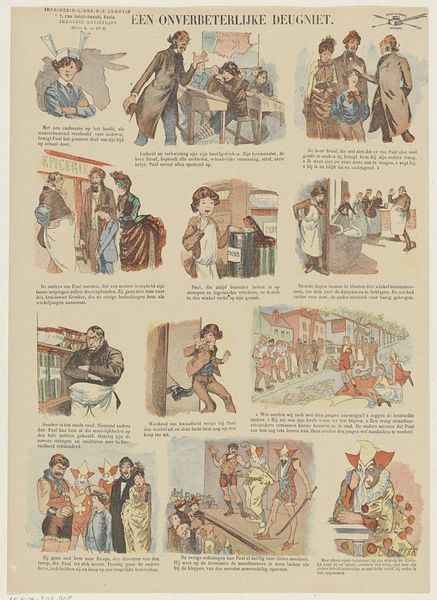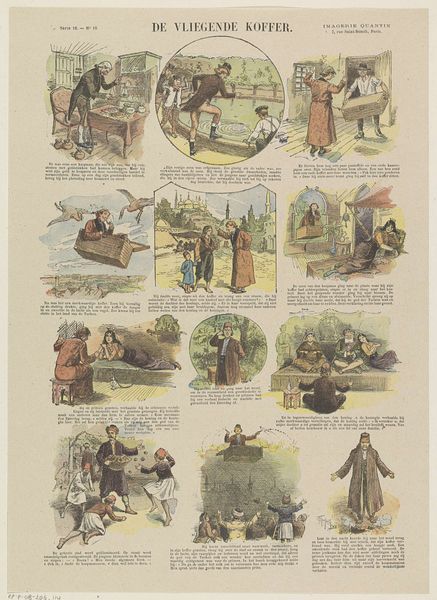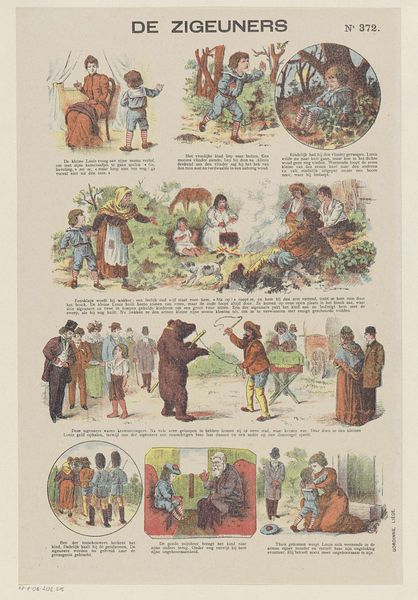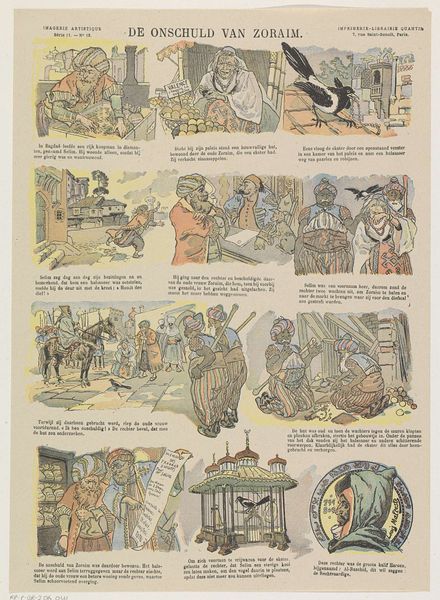
graphic-art, print, photography, poster
#
graphic-art
#
art-nouveau
# print
#
figuration
#
photography
#
genre-painting
#
poster
Dimensions: height 439 mm, width 319 mm
Copyright: Rijks Museum: Open Domain
Curator: Here we have Willy Sluiter's "Reclamebiljet voor vier uitgaven van de Modern-Bibliotheek," a poster from 1911, housed right here at the Rijksmuseum. Editor: It's… compact, busy even. A quartet of vignettes compete for my attention, unified by that jaundiced yellow wash. Gives it a very... turn-of-the-century consumptive aesthetic, I must say. Curator: Indeed. Sluiter created this advert to promote the Modern Library’s books. See how each miniature illustration corresponds to a different literary work being offered? Editor: Yes, look, a visual sampler. And you can tell these aren't just drawings; they're intended for mass production. The linework, while detailed, suggests reproduction through affordable printing processes, like lithography maybe? Making literature accessible...or appear that way. Curator: Absolutely. It speaks to the rising literacy rates and the growing middle class at the time. Publishing houses were keen to promote affordable literature to a broader audience. Editor: It’s interesting how the "Modern Library" positions itself. This use of figuration, almost genre painting, aims for broad appeal, using recognizable, everyday scenes, as advertisement. It makes the contents feel safe, familiar. How subversive could those Modern Library books have really been? Curator: That's a valid question. The Art Nouveau styling, while elegant, feels relatively restrained here, serving the commercial function over pure aesthetic expression. But think about what was considered "modern" then; it might surprise us today. Editor: Perhaps. The actual materiality would be interesting to investigate—paper stock, ink types—details offering insights into production costs, intended readership. Was this really mass market, or something slightly more elite? Curator: Examining those elements gives insight to the business of culture at the turn of the century. Editor: Indeed, it underscores that even aesthetic experiences were products. It challenges a romantic idea that fine art existed completely separate from commercial concerns, or accessible to all. Curator: The history is brought to life through such details and considerations of materiality and use. Editor: Definitely changed my initial read; there is an economy to consider when it comes to art.
Comments
No comments
Be the first to comment and join the conversation on the ultimate creative platform.

